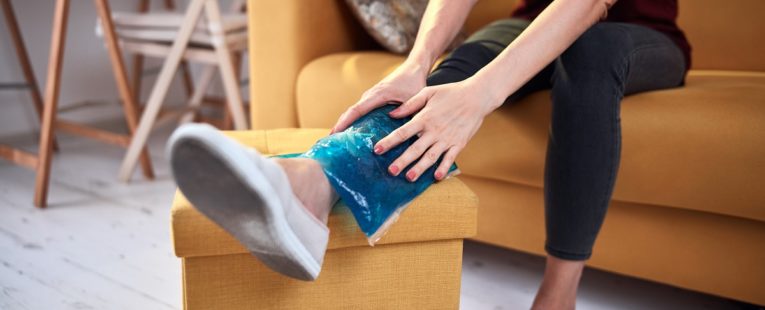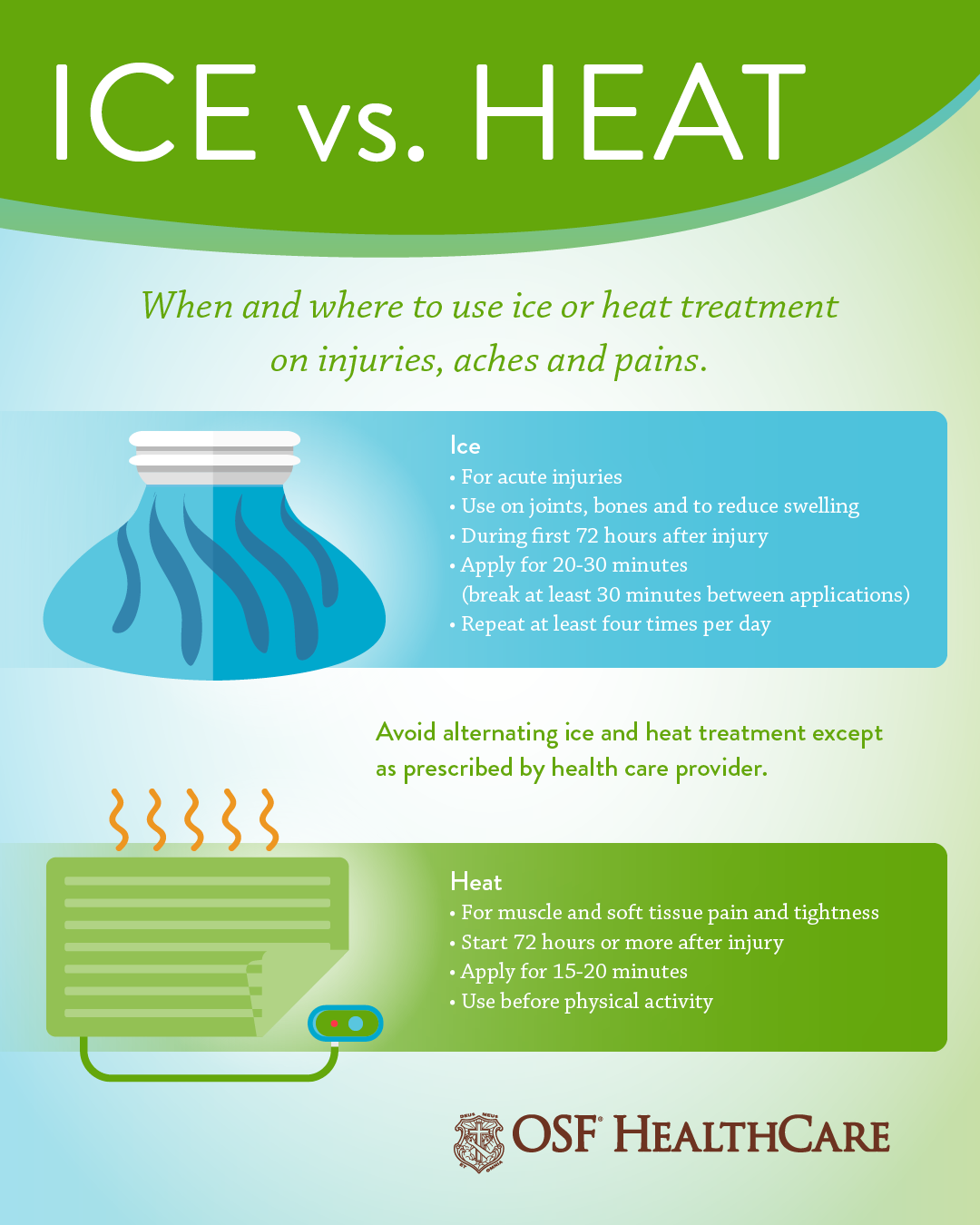You step off the curb and turn your ankle. You awkwardly lift a heavy object and wrench your shoulder. In the middle of a jog, your calf tightens.
Suddenly, pain. Then your mind races with possibilities: Broken? Sprained? Torn tissue?
You wonder whether to see a doctor or try to treat the injury yourself. Even if a trip to an urgent care provider is in order, you might need to administer some first aid. But now you can’t remember which to apply to your injury:
Ice? Or heat?
Here are some answers and tips to help you make good decisions the next time you or a loved one gets hurt.
New injury? See a doctor
Most important is deciding if you need to see the doctor.
“When you have a new injury, something you haven’t injured before, you should connect with a health care provider,” said Jake Mefford, clinical director of OSF OnCall Urgent Care.
“If you are in significant pain, you should get it checked out. Your provider has tools they can use to determine the likelihood of a break versus a strain, for example.
“But if it’s not a break and it’s a reinjury, such as a sprain of the same joint, often times you can take care of it at home.”
The roles of ice and heat
Ice and heat each play a role in treatment. But which to use?
Rule of thumb for most injuries: Ice first, heat later. But avoid using them in tandem except as directed by a health care provider, Jake said.
Most injuries cause your body to react with inflammation and swelling. Ice is used to cool down the injured joint or tissue and reduce swelling.
By contrast, heat would cause an opposite and undesired reaction. Heat treatment is more appropriate to use during recovery as you rehab back to full health.
When to use ice
Ice should be used on acute injuries as soon as possible after they occur. Even if you plan to see a health care provider for diagnosis, apply ice to help reduce the swelling. Getting the injured tissue to a colder temperature will also help prevent further damage.
“If ice is appropriate, get it on as soon as you can. If you roll your ankle or strain a muscle exercising, put ice on right away,” Jake said.
Use an ice pack or a bucket of ice if one is available. If not, improvise. Packets of frozen vegetables work well.
“In fact, a lot of times, frozen vegetables are better,” Jake said. “They’re more malleable, and it’s easy to mold them around the uneven surface of an injury – which is better than a hard block that touches only one part of the injury.”
Apply the ice for 20-30 minutes, then take a break for at least 10 minutes. Try to do that a minimum of four times a day, but you can do it hourly if you want. And if 20-30 minutes is too uncomfortable, apply ice for 10 minutes, then break for two and apply again.
When to use heat
After the first three days – or 72 hours – swelling should have peaked, and you can begin to use heat. But not on all injuries.
“For aches related to bones or joints, ice is still a good treatment option,” Jake said.
“Heat is most beneficial with soft tissues and your back. It’s great for muscles. Heat will loosen up muscle fibers and help recover your range of motion. Heat will increase blood flow and help warm up your muscles. So use heat before your physical therapy session or before you start a workout.”
Use a heating pad, a hot tub or even a bath tub with hot water – but not too hot. You can also improvise. For example, fill a cloth bag with rice and warm it up in a microwave. Or run a damp towel through the dryer and then apply it to the injured area.
Unlike with ice, however, do not apply the heat source directly to your skin. Also, limit heat treatment to 15-20 minutes, and don’t repeat. Once daily before exercising is sufficient.
“If you go longer than that, you risk thermal burns,” Jake said.
Last Updated: January 27, 2022

